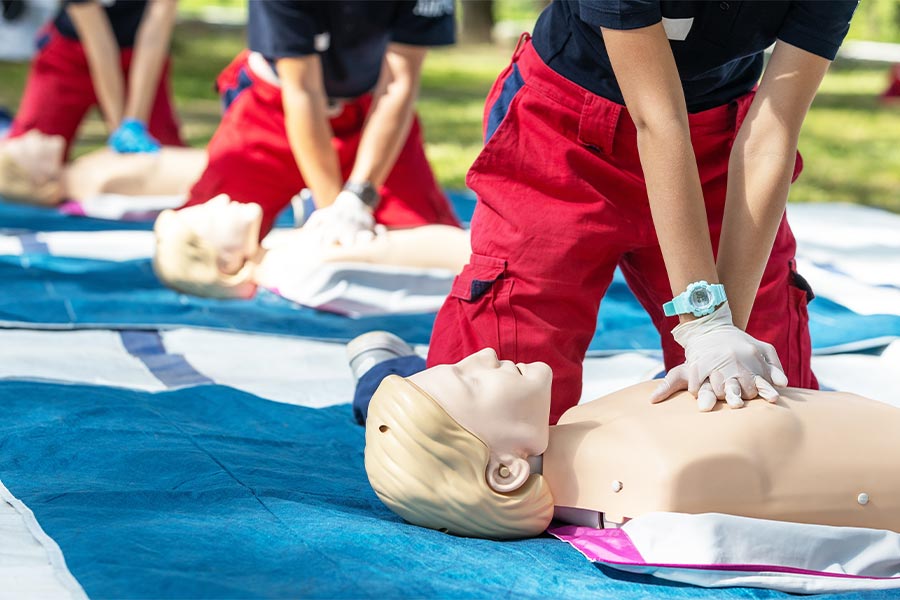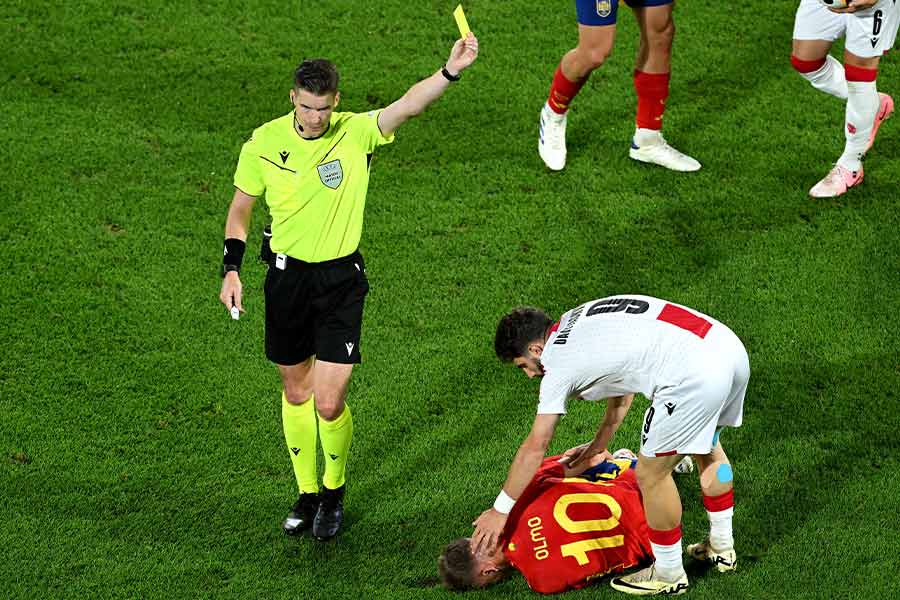The second Saturday in September is World First Aid Day, and this year, the theme is First Aid in Sports and Games.
Everyone remembers Kiss Plaster, right? You fell in the playground when you were little and ran to mommy for her instant kiss-and-fix. More than the bruise, the bruised ego was repaired and you headed back for your game with enthusiasm. Mum’s the word in more ways than one. At home, every little graze, cut, bruise, sprain or scald is first attended to by mom. Doctors are only required if things go bad. In fact, there was a little bottle of homoeopathic pills which were trotted out to be placed under the tongue every time a kid got a bump. Mothers, and some fathers, seem to know First Aid intuitively. But there is a little more to First Aid that everyone ought to know, especially those dealing with sports and games.
An all-important, life-saving skill
I cut my teeth in the Scouts movement. As part of the Scouting ecosystem, every Scout or Girl Guide needs to know some basic first aid and the principles behind it. For those who want to learn more, there is always the St John’s Ambulance Brigade at Govt Place North in Kolkata. In First Aid training, we had several mantras that were easy to remember. Some of them are listed below in the hope that more readers will understand this all-important, life-saving skill.

Cardiopulmonary Resuscitation (CPR) has to be learnt from a professional, but is critical to saving lives Shutterstock
The ABC approach. Airway - Breathing - Circulation. These are the three essential checks in saving life through Cardiopulmonary Resuscitation (CPR). CPR has to be learnt from a professional but is critical to saving lives.
Stop - Drop - Roll: a person whose clothes are on fire needs to be stopped from running and fanning the fire, dropped on the ground and rolled so that the fire is quenched. Yes, it may cause burns, but you may have saved a life. The goals of first aid are Preserve Life, Prevent Condition Worsening and Promote Recovery, in that order. Of course, the little ones in Scouts tended to learn these by heart and often got them mixed up. One hilarious moment was when I was told that the goal of first aid was to “Prevent Life”!
In real-life situations
Nothing could be clearer than on the streets of Kolkata (and many other cities, for sure). An accident occurs. Within minutes the casualty becomes a “victim” and the driver becomes the aggressor. First aid ignored, the offending vehicle is either damaged or burnt or both. Meanwhile the condition of the casualty may actually worsen while the crowd ensures that the driver now joins him as a victim of circumstance to be “rescued” by the police who charge him with rash and negligent driving. Perhaps they feel we should Promote Condition Worsening?

A crowd gathers at the site of a traffic accident in Kolkata Wikimedia Commons
We were also made to learn the phrase, “The First Aider is Not a Doctor” — which meant that you needed to assist in whatever way possible without “treating” the casualty. I recall an incident where a gentleman collapsed with apparent fits during a quiet Sunday church service. Immediately there were well-meaning people of all hues and sizes giving advice and treatment. One pushed a spoon into his mouth to prevent him from choking. Another turned him over making the spoon-in-mouth very dangerous. Yet another sprinkled holy water on him to the chants of “give him some water to drink”.
Eventually he came round, explained he has epilepsy and was taken home.
Recognise the signs
The difficult part for most people is understanding what has happened. For example, we need to recognise certain signs and ask the casualty to explain symptoms. If the person can’t explain, we need to check without moving the person. It’s not recommended that we shift his fractured arm and ask, “Is it paining now?” We run the risk of converting a hairline fracture to a compound fracture. Bleeding is easiest to diagnose, of course. First aiders are expected to try and control the bleeding, reduce the blood flow, staunch the flow. We are definitely not supposed to apply a tourniquet without proper supervision, especially to the carotid artery (the neck, for the uninitiated). And most First Aiders forget to wash their hands, increasing the chance of infection. I recall one incident in which this kid was bleeding from a gash on his arm. When first aiders reached him, the teachers were lecturing him on why he shouldn’t play in the corridor, as he dripped blood.

‘Fortunately we don’t need to worry with world-class football — the casualty won’t move or be moved till he is sure about which way the whistle blows!’ Stu Forster/Getty Images
Recognition of signs is imperative especially on the sports field. One of the primary instructions is Do Not Move the Casualty unless certain. Fortunately we don’t need to worry with world-class football — the casualty won’t move or be moved till he is sure about which way the whistle blows! But that is not injury, that’s theatre!
Most sports injuries tend to be sprains, strains, muscle pulls and at a more dangerous level, fractures and dislocation of limbs, deep cuts or wounds. In most cases, the following prescriptions work well enough:
For immediate first aid, follow the R.I.C.E. method: Rest, Ice, Compression, and Elevation. Rest the injured area, apply ice wrapped in a cloth for 20 minutes every two hours, use a compression bandage to reduce swelling, and elevate the affected limb above heart level to minimise inflammation.

Remember: The First Aider is Not a Doctor! Our job is to provide a free comfort service till the Doctor comes, after which the next casualty can be his or her bank account
For suspected fractures, please don’t prod and test, don’t ask the person to walk to the clinic! Immobilise the limb, preferably with a splint and call for a professional. Sprays and massages are out.
Bleeding must be controlled through direct pressure to the wound — sanitise your hands, use your fingers. Once bleeding is controlled, have the wound assessed by a professional. At the very least, for bleeding caused by an external object, a tetanus shot is a good investment but not the domain of the First Aider.
Head injuries must have a follow up assessment especially if the casualty has been unconscious, incoherent, dizzy or disoriented. In most cases the person should be treated for shock — get them to lie down, raise legs, loosen clothing, make them comfortable, and call for help.
And remember: The First Aider is Not a Doctor! Our job is to provide a free comfort service till the Doctor comes, after which the next casualty can be his or her bank account.
The author is a Goan living in Kolkata and a learning and development consultant who plays music, writes blogs and teaches whenever he can.
